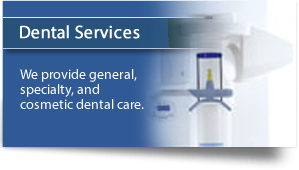Non-Surgical Treatment
Three Month Recall
You may be asked to come back in for your recall cleaning appointments once every three months instead of every six months. This will help maintain your periodontal health by reducing your gum pocket depth and the mobility of your teeth. Once your teeth become too mobile, they must be extracted. We want you to keep your natural teeth as long as possible. Three month recall may save your teeth.
Scaling & Root Planing
The initial stage of treatment is usually a thorough cleaning that includes scaling to remove plaque and tartar deposits beneath the gum line. The tooth roots may also be planed to smooth the root surface allowing the gum tissue to heal and reattach to the tooth. In some cases, the occlusion (bite) may require adjustment.
Antibiotics or irrigation with anti-microbials (chemical agents or mouth rinses) may be recommended to help slow the growth of bacteria that create toxins and cause periodontitis (gingival inflammation that spreads to bone causing bone loss).
When deep pockets between teeth and gums are present, it is difficult for us to thoroughly remove plaque and tartar. Patients can seldom, if ever, keep these pockets clean and free of plaque since tooth brushing only reaches 3mm under your gum. Consequently, surgery may be needed to restore periodontal health.
Ultrasonic Scaling
To fight periodontal disease, plaque, tartar, and the number of bacteria in the pockets in your mouth need to be reduced. One device that is used to remove calculus from teeth is an ultrasonic scaler. It consists of a wand with a small scaling tip that produces a soft ultrasonic vibration. The small, quick vibrations in combination with a water flow give a whole new level of effectiveness in calculus removal.
Ultrasonic scaling removes calculus and reduces the number of harmful bacteria below the gum line. It is an important tool in the prevention and treatment of periodontal disease. Wound healing studies have shown significant gum attachment gains, as well as reductions in probing depths and bleeding on probing with both manual and ultrasonic and sonic scaling.
Bone Regeneration
Traditionally, eliminating the gum pockets by trimming away the infected gum tissue and by re-contouring the uneven bone tissue treats gum disease. Although this is still an effective way of treating gum disease, new and more sophisticated procedures are used routinely today.
Guided Tissue Bone Regeneration “regenerates” the previously lost gum and bone tissue. Most techniques utilize membranes, which are inserted over the bone defects. Some of these membranes are bio-absorbable and some require removal. Other regenerative procedures involve the use of bioactive gels.

